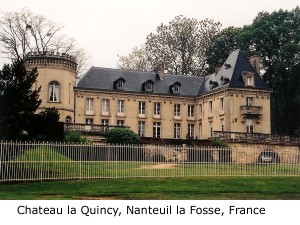The Chemin des Dames battlefield is frequently overlooked by English-speaking visitors. That is unfortunate. The Germans had been ensconced on an 18-mile irregularly-shaped ridgeline that overlooked the Aisne valley for almost three years.  During their occupation, they prepared extensive defensive positions both on the ridge and in caves and tunnels dug into the sides of the hills. The French Army decided to attack those strongpoints in April 1917. Everything was against their success; the strategic plan, the terrain, and the weather. The Nivelle Offensive was a disaster for the French, costing them almost 200,000 casualties and inciting a widespread army mutiny.
During their occupation, they prepared extensive defensive positions both on the ridge and in caves and tunnels dug into the sides of the hills. The French Army decided to attack those strongpoints in April 1917. Everything was against their success; the strategic plan, the terrain, and the weather. The Nivelle Offensive was a disaster for the French, costing them almost 200,000 casualties and inciting a widespread army mutiny.
The road, which gave the battle its name, runs along the top of the ridge and today it is well-marked with multi-language signboards explaining the three-week battle and locating the sites of important events that affected its outcome. In the spring of 2005 we were touring the area specifically to visit the Caverne du Dragon, a museum built atop a warren of tunnels in which, during the summer of 1917, French and German soldiers attempted to kill each other in the most dreadful and terrifying circumstances.
We had made arrangements to stay in a B&B located near the eastern end of the chemin in the direction towards Soissons We had stayed there once before and we were again warmly received by our host, the madame who rented one bedroom in the chateau’s circular tower. While enjoying a welcoming glass of wine, she showed us photographs of damage the chateau received during the Chemin des Dames battle, parts of which were never rebuilt. Thus the structure now only had one tower instead of the original two. She also presented photographs of American vehicles passing along the road in front of the chateau during the Second World War; an event that she had personally witnessed as a child.
Madame reminded us that is was Holy Saturday, the day before the Christian celebration of Easter. She invited us to join her in attending the special services and mass later that evening. We accepted with eager anticipation.
In the evening, we accompanied her into Soissons and she parked outside an old stone church; not the central cathedral, but a neighborhood church of nonetheless grand dimensions. After getting us seated in an appropriate pew, madame told us to remain as she returned to the rear of the church. I thought that it was rather empty for an Easter Vigil service, usually a well-attended event on the liturgical calendar. Suddenly the electric chandeliers suspended from the arched ceiling high above started to extinguish. The church turned to darkness section by section until the only illumination came from the few, red votive candles near the side altars.
The iron-clad central doors of the church opened admitting a procession of parishioners, each carrying a lighted taper. With slow dignity and in complete silence the procession moved up the center aisle towards the altar. Individuals left the group to enter pews at various points along the way. They remained standing with the thin candles held aloft. Eventually the church filled, every possible spot taken, illuminated only by a sea of flickering candles. At the end of the procession, altar servers, deacons, and the mass celebrant continued through the congregation, altar rail, and up the last few steps to the altar. The altar candles were lit signaling for the chandeliers to be re-illuminated. The Easter vigil service began.
Not knowing much French, let alone liturgical French, we did not understand the priest’s sermon; but no matter. We had experienced a simple ceremony that remained with us longer than any sermon ever would; a wordless ceremony that spoke volumes about faith and tradition.
© 2010 French Battlefields
PO Box 4808
Buffalo Grove, Il
USA
contact@frenchbattlefields.com
or Fax: 1-224-735-3478
web: French Battlefields

Good blogging!